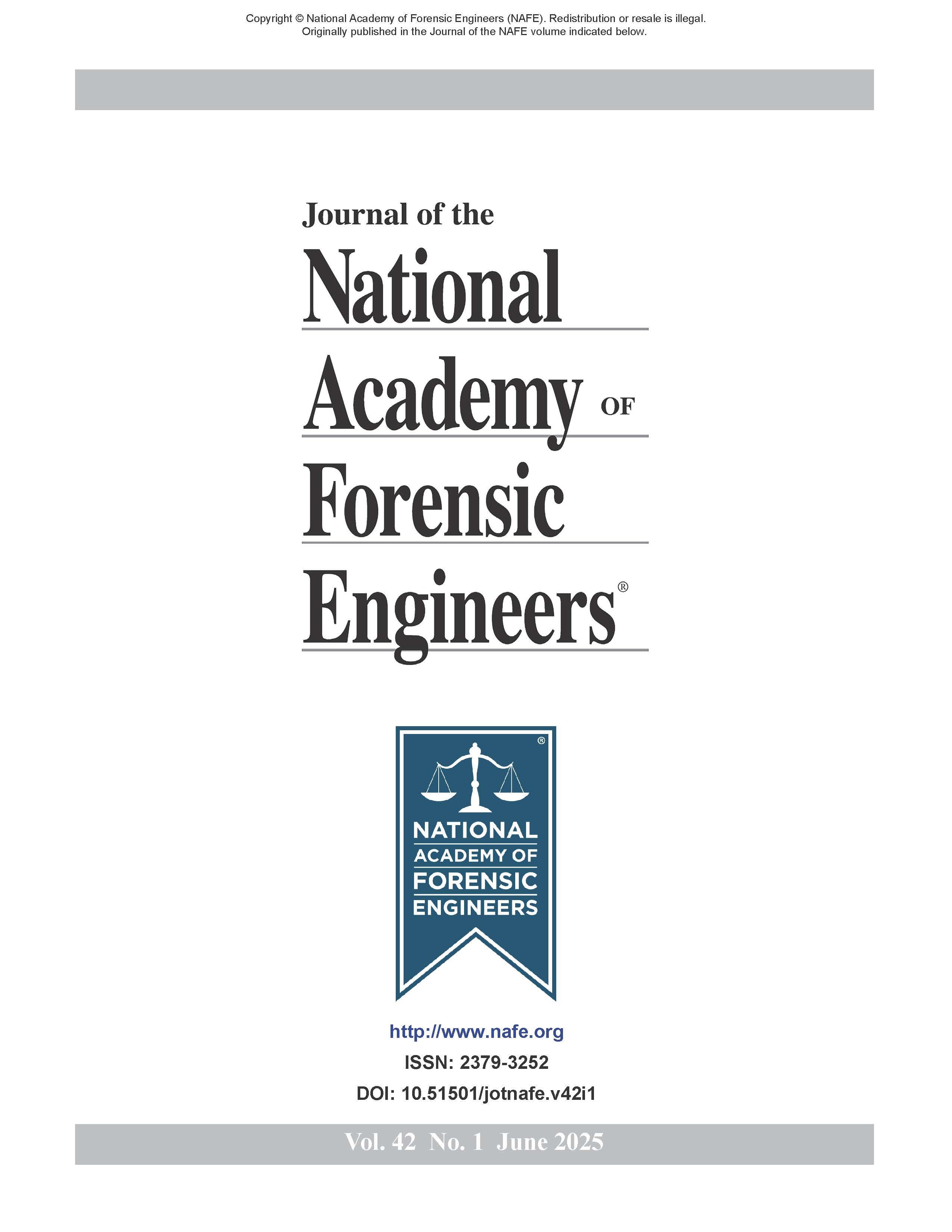Forensic Deformation Analysis of a Farm Clevis Using Photographs and Exemplar Tests
DOI:
https://doi.org/10.51501/jotnafe.v42i1.940Keywords:
Metal deformation, Towing, Extraction, Heavy equipment, Mining, Photographs, Shackle, Clevis, Projectile, Tow rope, Forensic engineeringAbstract
Photographic evidence can be a sufficient basis for a forensic failure analysis, especially when characteristic features of the failure mode are readily observed in photographs (e.g., deformation, fracture, etc.). In this case, the failed component (a farm clevis or round pin shackle) was part of equipment used to attempt to recover a vehicle mired in the mud at an above-ground mine site. The shackle failed, and the shackle pin became a projectile that penetrated the cab and injured the driver. The subject clevis was not available for physical inspection or testing. However, the condition of the subject clevis after the accident had been documented in photographs. Application of solid mechanics principles made it possible to determine the sequence of deformation steps that occurred during the failure. Additionally, comparing the deformation behavior documented in photographs of the subject clevis — and to tests of exemplars — allowed a determination of the strength of the subject clevis. Thus, investigators were able to use photographs to determine whether the shackle failed below its working load limit (WLL) or if a citation issued by the Mine Safety and Health Administration for using the subject clevis over its WLL was merited.
References
D. P. Couture, “Forensic Engineering Investigation of a High-Voltage Transmission Line Anchor Shackle Failure,” Journal of the National Academy of Forensic Engineers, vol. 39, no. 1, pp. 35-46, 2022. Online]. Available: https://doi.org/10.51501/jotnafe.v39i1.65.
S. Lee, I. Jeon, and D.-C. Baek, “Deviation based fault detection method for shackles under variable loading,” Journal of Mechanical Science and Technology, vol. 32, no. 2, pp. 753–760, 2018. Online]. Available: https://doi.org/10.1007/s12206-018-0124-2.
S. Weller, P. Thies, T. Gordelier, and L. Johanning, “Reducing Reliability Uncertainties for Marine Renewable Energy,” Journal of Marine Science and Engineering, vol. 3, pp. 1349-1361, 2015. Online]. Available: https://doi.org/10.3390/jmse3041349.
R. R. Gaji and M. T. Telsang, “FEA Based Analysis of Shackle For Offshore Application,” International Journal of Mechanical and Industrial Engineering, vol. 3, no. 3, Article 2, 2014. Online]. Available: https://doi.org/10.47893/IJMIE.2014.1146.
B. L. Boyce, T. B. Crenshaw, and M. F. Dilmore, “The Strain-Rate Sensitivity of High-Strength High-Toughness Steels,” Sandia Report, SAND2007-0036, 2007.
Additional Files
Published
How to Cite
Issue
Section
License
Copyright (c) 2025 Journal of the National Academy of Forensic Engineers

This work is licensed under a Creative Commons Attribution-NoDerivatives 4.0 International License.
All rights © Journal of the National Academy of Forensic Engineers.
Full statement regarding the author's license of copyright to the NAFE is shown on the Copyright section of the Submissions Page.






